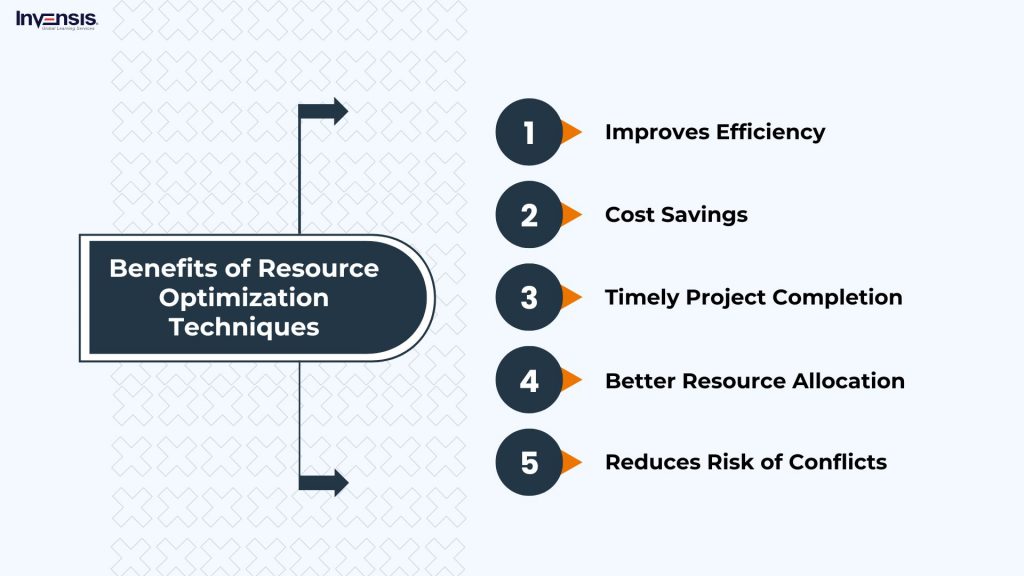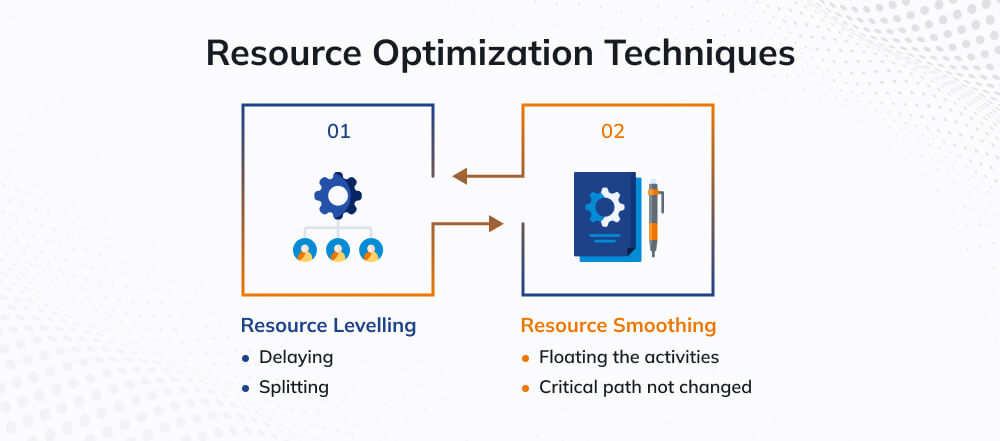
Every project manager knows that even the best plans can fall apart if resources aren’t managed well. Teams get stretched thin, timelines slip, and costs quietly climb. That’s why resource optimization in project management has become one of the most practical skills for keeping projects on track and businesses profitable.
When done right, project resource optimization ensures that every hour, person, and tool is used where it adds the most value. It’s not about pushing people harder; it’s about planning smarter. Whether it’s balancing workloads, reassigning tasks, or using resource optimization techniques like leveling and smoothing, these approaches help project managers maintain momentum without burning out their teams.
In this blog, we’ll unpack what resource optimization really means, explore the techniques behind it, and show how it connects directly to better project performance and team well-being.
What are Resource Optimization Techniques?
Resource optimization techniques are strategies used in project management to ensure the efficient and effective utilization of available resources, such as personnel, equipment, and materials, to achieve project goals. These techniques help organizations balance resource demand with availability, reduce waste, and optimize performance while adhering to time, cost, and quality constraints. They are essential for maximizing productivity, minimizing resource conflicts, and ensuring timely project delivery.
Resource optimization is an integral part of schedule network analysis, a process used to assess and refine project schedules. It helps calculate the schedule compression of a project, ensuring that timelines are optimized without compromising quality. These techniques focus on scheduling and assigning the necessary resources to those activities, considering constraints such as resource availability, task duration, and project deadlines.
Within resource optimization in project management, the focus is on using data and planning tools to schedule, assign, and adjust resources based on changing project needs. By doing this, managers can minimize delays, control costs, and maintain consistent quality across all deliverables.
Key Benefits of Resource Optimization Techniques
When projects start to feel chaotic, with deadlines slipping and workloads piling up, the real issue is often an imbalance in resources. This is where resource optimization techniques make the biggest difference. They bring order to complexity by ensuring people, tools, and timelines work in sync.
Here’s how effective resource optimization in project management adds measurable value:
- Improves Efficiency: Resource optimization ensures resources are fully utilized, reducing idle time and waste. This boosts overall productivity and accelerates task completion
- Cost Savings: By efficiently allocating resources, unnecessary expenses are avoided, keeping the project within budget. This leads to significant cost reduction
- Timely Project Completion: Optimizing resources ensures tasks are completed on time by aligning schedules with resource availability. This prevents delays and helps meet project deadlines
- Better Resource Allocation: Resources are assigned based on skills and availability, ensuring the right fit for each task. This improves task quality and minimizes resource conflicts
- Reduces Risk of Conflicts: Resource optimization helps identify potential conflicts early, balancing workloads and availability. This reduces disruptions and ensures smooth project execution
Resource Optimization Techniques
Once you understand the value of resource optimization in project management, the next step is knowing how to do it effectively. Two of the most widely used resource optimization techniques are Resource Leveling and Resource Smoothing.
These methods help project managers balance team capacity, deadlines, and available assets, without compromising on quality or scope. Let’s look at how each technique works in practice.
1. Resource Leveling
Resource leveling is a technique used in project management to address resource over-allocation. When resources, such as personnel or equipment, are assigned more work than they can handle at a given time, resource leveling helps adjust the project schedule to distribute the workload more evenly. This technique aims to ensure that every resource is manageable by moving tasks around in the timeline without affecting the project’s overall scope.
Key Characteristics of Resource Leveling Include:
- Modifying project schedule to optimize resource usage
- Potentially extending the project timeline to accommodate resource constraints
- Prioritizing critical path activities while redistributing non-critical tasks
- Often used when resources are limited or have conflicting assignments
Example Scenario: In a construction project, if multiple teams are scheduled to work simultaneously and there aren’t enough workers or equipment, resource leveling might involve delaying some non-critical tasks or redistributing work to ensure no team is overloaded.
2. Resource Smoothing
Resource smoothing is a technique that aims to optimize resource usage while keeping the project timeline unchanged. Unlike resource leveling, which may adjust the project schedule, resource smoothing works within the given timeline to ensure that resources are used evenly throughout the project. It seeks to avoid resource overload while minimizing the impact on the project’s overall duration.
Key Characteristics of Resource Smoothing Include:
- Adjusting resource assignments within the original project schedule
- Maintaining the project’s original duration
- Focusing on reducing resource intensity variations
- Using available float or slack time to balance resource usage
Example Scenario: In a software development project, resource smoothing might involve redistributing team members’ tasks to create a more even workload throughout the project, ensuring no developer is simultaneously overworked and under-utilized at different project stages.
Difference Between Resource Smoothing and Resource Leveling
Both resource leveling and resource smoothing are essential resource optimization techniques used to balance workloads and manage project timelines, but they serve different purposes. The key distinction lies in how they handle schedule flexibility and resource constraints.
Here’s a clear comparison that helps you decide which one to use in your project:
| Resource Leveling | Resource Smoothing |
| Applies the resource constraints to the project, which may result in a change in project duration. | Applies resource smoothing after performing the resource leveling and utilizes the slack. The result of a change in project duration does not change Resource smoothing. |
| Primarily driven by resource constraints. The project team does not have more than 45 hours in a week for the given resource. | More to do with preferred boundaries. Resource smoothing has 45 hours available for the given resource. You can also allocate 38 hours per week to save time and get more space. |
| The allocation limits identified in resource leveling must be applied. | The desired limit identified in resource smoothing may sometimes not be applied if we do not have slack. |
| Resource Levelling accommodates the resource constraints before optimizing it as before working on resource smoothing. | Resource Smoothing is applied after resource-leveling. |
Both are integral to resource optimization in project management, ensuring projects stay realistic, sustainable, and aligned with available capacity.
Modern Resource Optimization Strategies
As projects become more dynamic and data-driven, the way we manage resources has evolved, too. Traditional tools are no longer enough; project managers now rely on smarter, more adaptive approaches to stay ahead. Here are some modern resource optimization strategies reshaping how teams plan and deliver work today:
- AI-Based Resource Forecasting: Predict workload spikes, skill shortages, and potential bottlenecks before they happen. AI-driven project tools now provide early warnings and recommendations for resource reallocation.
- Real-Time Utilization Dashboards: Modern teams use live dashboards to track how each person, tool, or department is performing. This visibility helps project managers redistribute workloads quickly when priorities shift.
- Cross-Project Resource Pooling: Many organizations now share talent and tools across projects, improving utilization and reducing downtime. This creates flexibility when demands fluctuate.
- Skill-Based Allocation: Instead of assigning people randomly, data analytics helps match individuals to tasks based on expertise and past project performance.
By combining these resource optimization techniques with technology, managers can build agile teams that deliver faster without compromising quality.
Conclusion
Projects don’t fall apart overnight; they slip when people, time, and tools aren’t managed wisely. That’s why resource optimization in project management isn’t just a technique; it’s the habit of working smarter with what you already have.
When project managers use resource optimization techniques like leveling and smoothing, they create breathing room for their teams and clarity for their plans. It’s about finding that balance where deadlines are realistic, workloads are fair, and progress feels steady instead of stressful.
Today, with hybrid teams and tight budgets, project resource optimization has become even more critical. Many managers are turning to simple data dashboards and AI-powered insights to see where their people are stretched and how they can plan more effectively. It’s not about adding more tools; it’s about making better decisions with the ones you already use.
If you’re serious about becoming that kind of project leader, one who can plan confidently and deliver consistently, consider upskilling through Invensis Learning’s PMP Certification Training. It’s where you’ll learn the frameworks and real-world practices that make efficient resource management second nature.


















